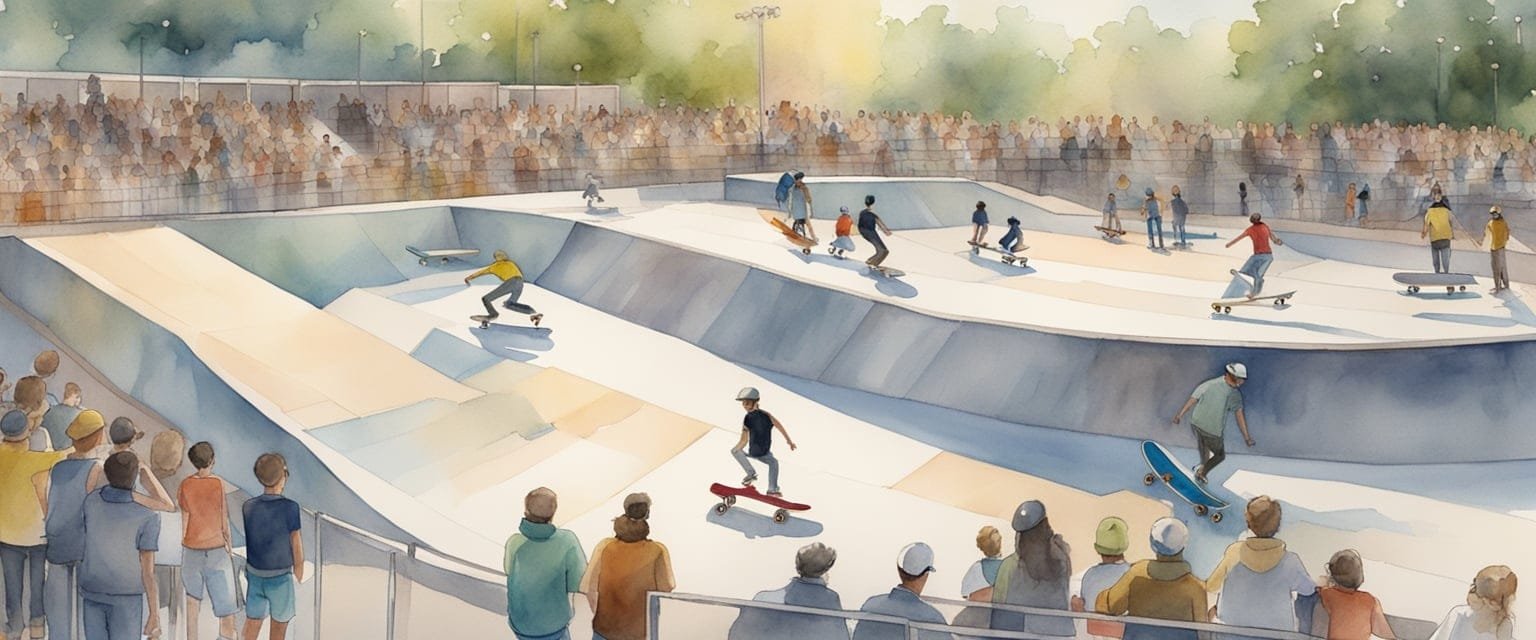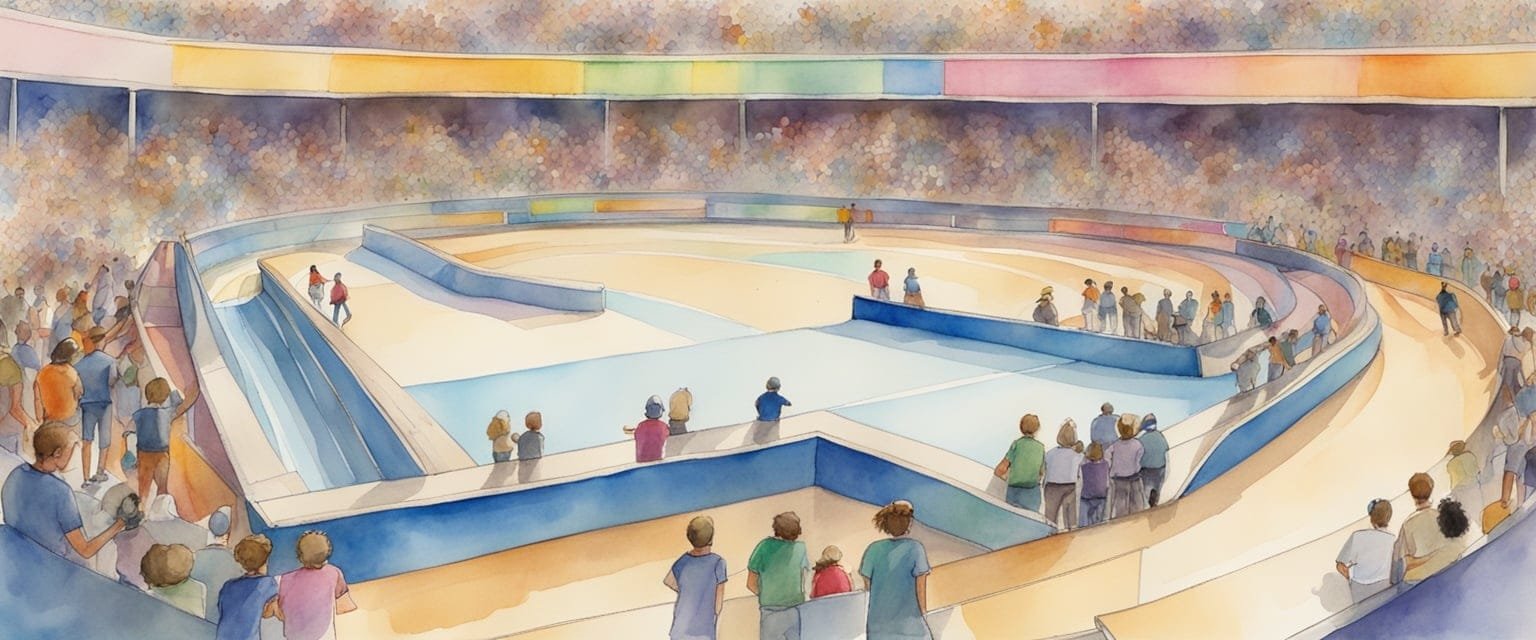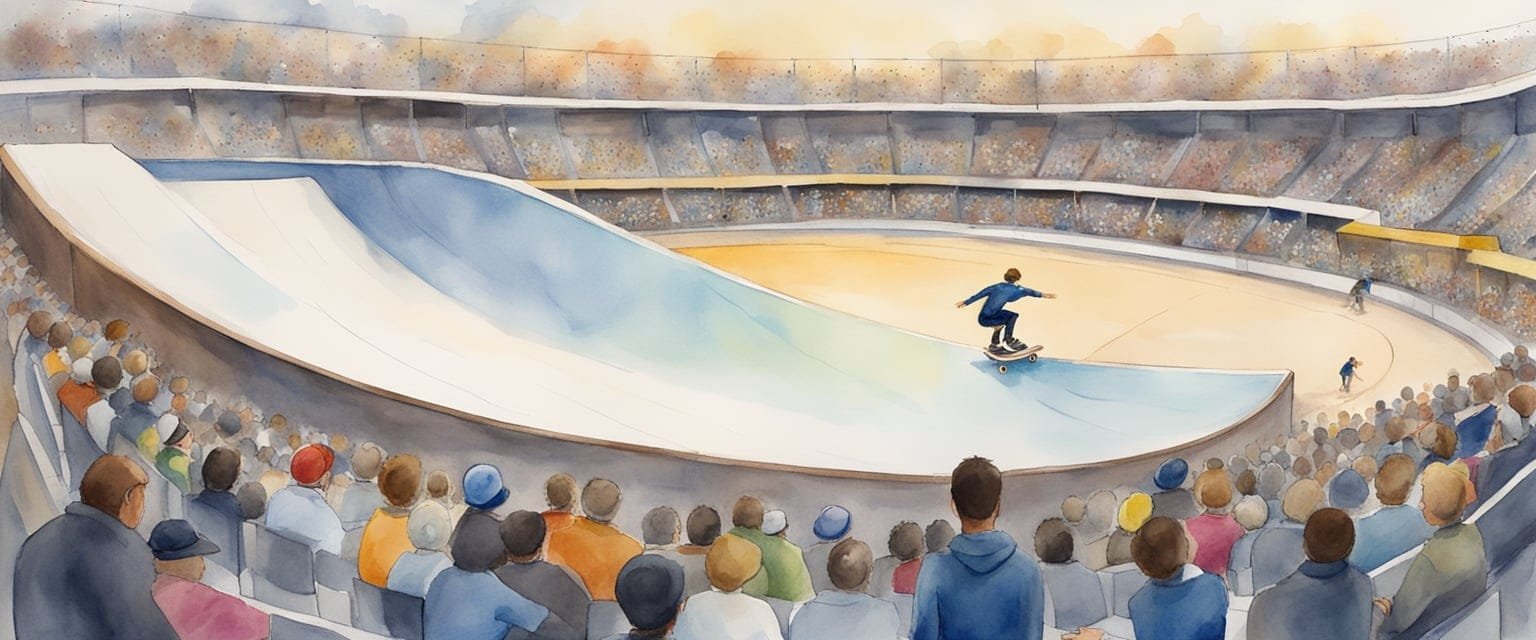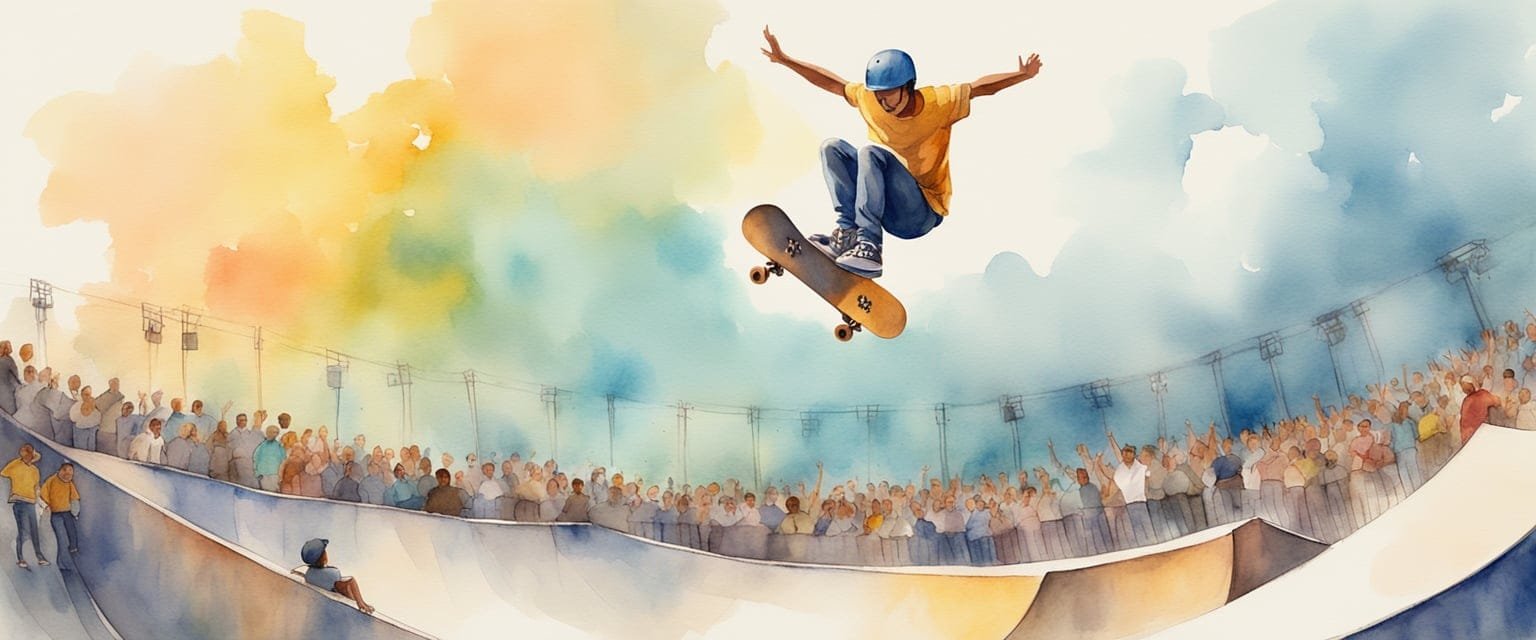Skateboarding has gained a prominent spot in the Olympic spotlight, bringing an exciting mix of sport and culture. As a fan, you’ll find that Olympic skateboarding not only showcases thrilling athleticism but also highlights its rich history, starting from its debut in Tokyo 2020 to its much-anticipated return in Paris 2024. Whether you’re a longtime skater or just curious about this dynamic sport, understanding the different disciplines and competition formats is essential to enjoying the games.

In this ultimate guide, I will walk you through everything you need to know about Olympic skateboarding. From the unique courses that athletes will navigate to the strategic preparation behind their performance, there’s so much to uncover. I’ll share insights on notable Olympians who have made their mark and discuss the impact of skateboarding on the Olympic platform.
Key Takeaways
- Skateboarding debuted in the Olympics during Tokyo 2020.
- The Paris 2024 Games will feature unique skateboarding disciplines and courses.
- Understanding the competition structure and scoring is key to following the sport.
History of Skateboarding in the Olympics
Skateboarding has made significant strides to become an Olympic sport. Its official recognition and debut in the Olympic Games reflect a fascinating journey full of dedication and passion.
Olympic Debut: Tokyo 2020
I remember the excitement when skateboarding made its Olympic debut at the Tokyo 2020 Games. This moment marked a new era for the sport.
The competition featured two events: street and park. Each discipline showcased different skills and styles, making it thrilling for fans. There were 80 competitors, equally divided between men and women. Skaters from around the world brought their unique flair.
Japan’s Tokyo served as a vibrant backdrop for this event. I loved seeing the energy of the crowd, cheering for their favorite athletes. The success of the Tokyo Games paved the way for skateboarding’s future in the Olympics, especially with the next opportunity at the Paris 2024 Olympics.
Skateboarding’s Journey to Recognition
The journey of skateboarding to the Olympics was not always smooth. Its roots trace back to the late 1940s in California and Hawaii, where it began as a way for surfers to ride the streets.
In 2015, skateboarding was shortlisted for Olympic inclusion alongside other sports. By 2016, the International Olympic Committee officially recognized it. This was huge! Skateboarding’s inclusion aimed to attract younger audiences to the Olympic Games.
With the growing popularity of skateboarding, it has gained a significant following in global sporting events. The journey reflects the changing landscape of sports and how they evolve over time. I can’t wait to see how this sport continues to develop in future Olympics.
Understanding Skateboarding Disciplines
Skateboarding in the Olympics features two main disciplines: park and street. Each has its own unique style, course, and tricks that athletes use to showcase their skills. Here’s a closer look at both.
Park Skateboarding Explained
Park skateboarding takes place in a designed course that mimics the features of a skatepark. The terrain usually includes ramps, bowls, and various obstacles. Athletes get three runs, each lasting 45 seconds. They attempt tricks like grabs, flips, and spins while moving through the course.
Judges score the performance based on difficulty, creativity, and execution. A perfect run can score anywhere from 0 to 100. Using their skills, athletes try to impress judges with technical tricks and smooth lines, making park skateboarding an engaging event to watch.
Street Skateboarding Basics
Street skateboarding is different as it takes place in an urban environment, often using real-world obstacles like stairs, rails, and ledges. This discipline focuses on tricks that can be done in street settings, making it accessible to many skateboarders.
In street events, skateboarders also perform runs, showcasing tricks like slides, grinds, and flips. Here, creativity and style matter, as athletes adapt to various obstacles. Judges assess the difficulty and originality of each trick, and scoring is similar to park events. This adds an exciting layer to the competition and demonstrates a broader range of skills.
Competition Structure

Olympic skateboarding has a well-defined structure that includes a preliminary round and a final round. The way competitors qualify for the finals is key to understanding the competition’s excitement.
Qualification to Finals
In the preliminary rounds, skaters compete for a spot in the finals. Typically, there are around 20-22 skaters in this stage. Each skater has about 2-3 runs to showcase their skills. The judges score these runs based on creativity, difficulty, and execution.
At the end of the preliminary rounds, the top eight skaters with the highest scores move on to the finals. This set-up makes every run count, adding tension and thrill to each moment. The selection process emphasizes skill and performance, ensuring that only the best advance.
The Final Round
The finals feature the top eight skaters from the preliminaries, competing for the medals. Each skater again gets two 45-second runs in this round, aiming for their best scores. The runs are judged in a similar way as in the prelims, focusing on style, difficulty, and execution.
In the final round, the pressure is high, as every skater aims to impress the judges and the crowd. The excitement builds as the skaters take their turns, pushing the limits of their athletic ability. The final scores determine who takes home the gold, silver, and bronze medals, making it a thrilling conclusion to the competition.
The Olympic Skateboarding Course

The skateboarding course at the Olympics is designed to challenge athletes with a mix of obstacles and elements. It separates two main types of courses: park and street. Each has its own features and ways to showcase different skating styles.
Design and Features
The design of each skateboard course is crucial. They are built to test skill and creativity.
The park course includes features like ramps, hips, and bowls. These allow for fluid tricks and high airs. Skaters must use speed and flow to navigate the transitions effectively.
The street course, on the other hand, replicates an urban environment with obstacles like ledges, rails, and stairs. It promotes technical skills as skaters grind or slide along rails and navigate varying heights.
Both types have elements that encourage unique styles, making the design very important for competitive success.
Park vs. Street Courses
There are distinct differences between park and street courses that affect how competitions are judged.
Park courses focus on fluid movement. Skaters gain points by linking tricks together smoothly. They use ramps to gain height and perform complex tricks in the air.
In contrast, street courses emphasize technical precision. The inclusion of elements like handrails and stair sets requires skaters to use balance and control. Judges look for difficulty and execution in trick performance.
Understanding these differences can help skaters prepare better and strategize for their performance in competitions. Each course type provides a unique experience and showcase for their talent.
Rules and Scoring System

In Olympic skateboarding, understanding the rules and scoring system is essential. The judges evaluate performances based on several key criteria, leading to an overall score that determines the winner.
Judging Criteria
Judges assess skateboarders based on five main criteria: Difficulty, Execution, Variety, Amplitude, and Style.
- Difficulty: This looks at the complexity of the tricks performed. Harder tricks earn higher scores.
- Execution: This focuses on how well the skater performs each trick. Clean landings and fluid movements count for more.
- Variety: A mix of tricks enhances a performance. Judges prefer to see both technical and creative moves.
- Amplitude: This refers to the height and distance of tricks, especially in park skateboarding.
- Style: Personal flair is crucial. Unique styles can impress judges more.
Each trick is scored on a scale from 0 to 100, with the highest levels showcasing mastery and creativity.
Final Scores Calculation
The total score for a skater is determined by combining two scoring elements.
First, judges give a score for the run portion, which counts as one part of the overall score. This run includes a skater’s best tricks and is also scored from 0 to 100.
Next, each skater performs individual tricks, with the best two also scored from 0 to 100. Adding these scores together gives a final score ranging between 0 and 300.
With the focus on these rules and scoring methods, it’s clear how important each aspect is in a skater’s performance during the event. Understanding this system really helps appreciate the skill involved in Olympic skateboarding.
Athlete Preparation and Strategy

Preparing for the Olympics is a big deal for skateboarders. It takes a lot of hard work, focus, and strategy. I’ll share some key aspects of training and developing routines that can help athletes perform at their best.
Training for the Olympics
When I train for the Olympics, there are several important areas I focus on. First, I make sure to practice repetition of key tricks and techniques to build muscle memory. This helps me land each move smoothly during a performance.
Next, I work on my speed and flow. It’s important to combine these elements to create a seamless performance. I often set up lines in my training area to simulate the competition environment. This helps me get used to the transitions and obstacles I’ll face.
I also pay attention to flexibility and strength. Stretching helps prevent injuries and allows me to maneuver better on my skateboard. With consistent training, I feel more confident and ready for competition day.
Building a Competitive Routine
Creating a strong routine is essential for standing out in competitions. I focus on mixing technical tricks with creative elements. Precision is key here; I want every trick to hit perfectly.
I like to start with a combination of tricks that showcase my style, then build toward more challenging moves. Keeping the crowd engaged is also part of my strategy. For me, that means adding flair and unique lines to keep my performance exciting.
I frequently record and analyze my routines, looking for areas to improve. This self-review helps me refine my moves and timing. A well-planned routine not only improves my scores but also boosts my confidence.
Notable Olympians and Their Achievements

Skateboarding at the Olympics has showcased many talented athletes. I’ve seen brilliant performances that have made a mark on this new Olympic sport. Let’s take a closer look at some key figures and their impressive achievements.
Profiles of Gold Medalists
Keegan Palmer is one of the standout stars. He won the gold medal in men’s park skateboarding at Tokyo 2020. His smooth style and creativity impressed both judges and fans.
Nyjah Huston is another name to remember. Although he didn’t take home gold in 2020, his experience and skills have made him a top competitor in street skateboarding for years. He has multiple X Games medals and is always a favorite in competitions.
Sky Brown, at just 13 years old, became the youngest Olympic medalist for Team GB by winning a bronze in women’s park skateboarding. Her energy and talent have inspired many young skaters around the world.
Rising Stars in Skateboarding
The future of skateboarding at the Olympics looks bright with rising stars like Kelvin Hoefler and Mariah Duran. Hoefler excels in street skating and won the silver medal in Tokyo. His technical skills and determination are impressive.
Mariah Duran is making waves as well. Competing in women’s street skateboarding, she has been a driving force for women in the sport. She earned her spot at the Olympics and represents the new generation of skilled female athletes.
These athletes are paving the way for the future of skateboarding, and I can’t wait to see how they will influence the sport in years to come!
Impact of Olympic Skateboarding

Olympic skateboarding has created a significant shift in how the sport is perceived and practiced worldwide. It has opened doors for athletes and encouraged youth participation, especially in urban areas.
Skateboarding’s Growth After the Olympics
Since its debut in the Tokyo 2020 Olympics, skateboarding has seen remarkable growth. More people are joining skate parks, and interest in the sport is rising. Many local communities are investing in skateboarding facilities, making it more accessible.
Organizations are also hosting more competitions, allowing skaters to showcase their skills. With skateboarding now recognized on such a large stage, the sport’s credibility has increased. This momentum helps to attract sponsorships and partnerships, providing financial support for both events and athletes.
Opportunities for New Talent
Olympic skateboarding has opened many opportunities for new talent. Young skaters, especially those from urban environments, can now see a clear path to excellence. With events catering to different skill levels, budding skateboarders can compete and gain experience.
Programs aimed at youth development are becoming more common. These programs encourage participation and provide coaching. I see this as a great way to nurture future champions. The exposure from the Olympics motivates many to pursue skateboarding more seriously.
As I watch new names and faces emerging, it’s clear that the Olympic platform is creating a vibrant future for the sport. More young athletes are breaking into competitive skateboarding, fueled by the opportunities that this global spotlight provides.
Looking Forward: Skateboarding in Paris 2024
I am excited to see what the Paris 2024 Olympics have in store for skateboarding. With the event just around the corner, there are many details to look forward to. From the schedule of events to the specific venues where the action will happen, it’s shaping up to be an unforgettable experience.
Scheduled Events and Venues
Skateboarding at the Paris 2024 Olympics will take place from July 27 to August 7. The events will be held in the stunning Place de la Concorde, a historic location that will provide a beautiful backdrop for the competitions. There will be two main events: Park and Street skateboarding.
A total of 88 top skateboarders, evenly split between men and women, will compete. This includes 44 men and 44 women who earned their spots through various qualifying events. It’s fascinating to think about the talent that will converge in this iconic setting, showcasing their skills and creativity.
What’s New in the Paris Games
One exciting aspect of the Paris 2024 Games is the fresh, innovative formats being introduced. I can’t wait to see how the new competition structures unfold. The event aims to highlight not just athletic talent but also the artistic side of skateboarding.
Additionally, the venue has been designed specifically for better viewing and engagement. Spectators will have the chance to get closer to the action, making it feel even more electrifying. There are also plans for fan interaction, allowing me to participate in the experience, whether through live commentary or social media engagement. This promises to be an event that embraces both athletes and fans alike.
Resources for Fans
As a fan of Olympic skateboarding, I want to make sure you have all the tools you need to stay updated and enjoy the competitions. Here are some great places to find news and ways to watch the events online.
Where to Find Skateboarding News
Staying informed about skateboarding is easy with a few reliable resources. I recommend checking out websites like X Games for the latest news on events, athlete interviews, and updates on competitions. They cover not just big events, but also local competitions in places like Brazil.
Social media is another great way to get real-time updates. Follow skateboarding athletes and teams on platforms like Instagram and Twitter. You can see behind-the-scenes content, practice footage, and more.
Don’t forget to check out Team USA’s official website as well. They provide news about American skateboarders and their journey in the Olympics. This is particularly useful for keeping tabs on my favorite athletes!
Watching the Competitions Online
When it comes to watching the events, there are several options available. During the Paris 2024 Olympics, I can find live streams on various platforms like NBC and Peacock. These channels will broadcast all the skateboarding competitions, making it easy to catch every trick and run.
YouTube is another fantastic resource. Many skateboarding organizations post highlight reels and full competitions on their channels. This way, I can watch my favorite moments anytime.
Plus, following the schedule is key. I can find the complete event schedule on the official Olympic website. This ensures I don’t miss the street and park competitions that I want to see. Mark your calendars, and get ready for an exciting time!
Frequently Asked Questions

Skateboarding in the Olympics raises many questions. I want to tackle some of the most common ones I’ve encountered about qualifications, rules, training, skill tips, team selection, and the events themselves.
What are the qualifications required to compete in Olympic skateboarding?
To compete in Olympic skateboarding, athletes must be registered with their national skateboarding governing body. They also need to accumulate enough points from qualifying events on the World Skate calendar. This ensures they have the necessary experience and skill level.
What are the rules and scoring system for skateboarding in the Olympics?
The competition is judged based on various criteria, including difficulty, execution, and style. Judges score runs on a scale from 0 to 100. The final score combines the best runs for each competitor, ensuring that every aspect of their performance is considered.
What kind of training regimen do Olympic skateboarders typically follow?
Training for Olympic skateboarders usually includes a mix of on-board practice and strength training. They spend hours perfecting tricks and routines while also focusing on improving their physical fitness. Cross-training in other sports can also be beneficial.
What tips do experts give for improving your skateboarding skills?
To improve your skills, experts suggest practicing consistently. Focus on mastering basic tricks before moving on to more advanced ones. They also recommend watching videos of professionals and learning from their techniques.
How is the Olympic skateboarding team selected and who is eligible?
Selection for Olympic skateboarding teams is typically based on performances in qualifying events. Each country has its criteria, but top-ranking skaters are usually chosen. Athletes need to be at least 13 years old to compete.
What are the different skateboarding events featured in the Olympics?
The Olympics showcase two main styles of skateboarding: park and street. Park events take place in designed bowls and ramps, while street events use urban features like rails and stairs for tricks. Each style has its unique challenges and scoring methods.

